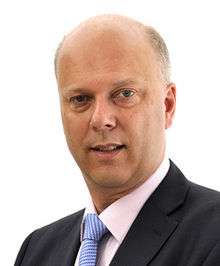Lord President of the Council
| Lord President of the Council | |
|---|---|
|
Royal Arms used by the Privy Council Office | |
| Privy Council Office | |
| Style | The Right Honourable |
| Appointer |
Monarch of the United Kingdom on advice of the Prime Minister |
| Inaugural holder | Charles Brandon, 1st Duke of Suffolk |
| Formation | 14 August 1530 |
| Website | www.privycouncil.independent.gov.uk/ |
.svg.png) |
| This article is part of a series on the politics and government of the United Kingdom |
|
|
|
|
The Lord President of the Council is the fourth of the Great Officers of State of the United Kingdom, ranking beneath the Lord High Treasurer and above the Lord Privy Seal. The Lord President usually attends and is responsible of presiding over meetings of the Privy Council, presenting business for the monarch's approval. In the modern era, the holder is by convention always a member of one of the houses of Parliament and the office is a Cabinet post. The Lord President is currently David Lidington as of 14 July 2016.
The office and its history
The Privy Council meets once a month, wherever the Sovereign may be residing at the time, to give formal approval to Orders in Council. Only a few Privy Counsellors need attend such meetings, and only when invited to do so at the Government's request. As the duties of the Lord President are not onerous, the post has often been given to a government minister whose responsibilities are not department-specific. In recent years it has been most typical for the Lord President to also serve as Leader of the House of Commons or Leader of the House of Lords.
Before the change of government in 2010, the Lord President was Peter Mandelson, who was also First Secretary of State and Secretary of State for Business, Innovation and Skills.[1] This was the first time that the Lord President had not been a leader of one of the two Houses since the period 20 October 1963 to 16 October 1964, when Quintin Hogg (2nd Viscount Hailsham until November 1963), after resigning as Leader of the House of Lords, kept the office along with the offices of Minister for Sport and, from 1 April 1964, also of Secretary of State for Education and Science.[2]
On several occasions since 1954, non-British Ministers have served briefly as acting Lords President of the Council, solely to preside over a meeting of the Privy Council held in a Commonwealth realm.[3][4][5] Examples of this practice are the meetings in New Zealand in 1990 and 1995, when Geoffrey Palmer and James Bolger respectively were acting Lords President.
In the 19th century, the Lord President was generally the cabinet member responsible for the education system, amongst their other duties. This role was gradually scaled back in the late 19th and early 20th centuries but remnants of it remain, such as the oversight of the governance of various universities.
A particularly vital role was played by the Lord President of the Council during the Second World War. The Lord President served as chairman of the Lord President's Committee. This committee acted as a central clearing house for dealing with the country's economic problems. This was vital to the smooth running of the British war economy and consequently the entire British war effort.
Winston Churchill, clearly believing that this wartime co-ordinating role was beneficial, introduced a similar but expanded system in the first few years of his post-war premiership.[6] The so-called 'overlord ministers' included Frederick Leathers as 'Secretary of State for the Co-ordination of Transport, Fuel and Power' and Frederick Marquis, 1st Baron Woolton as Lord President. Woolton's job was to co-ordinate the then separate ministries of agriculture and food.[7] The historian Peter Hennessy quotes a PhD thesis by Michael Kandiah saying that Woolton was 'arguably the most successful of the Overlords' partly because his ministries were quite closely related, indeed they were merged in 1955 as the Ministry of Agriculture, Fisheries and Food.[8]
The Lord President has no role in the Judicial Committee of the Privy Council.
Visitorial role
The Lord President also serves as the Visitor for several British universities, including:
- University of Birmingham
- University of Bristol
- University of Hull
- Imperial College London
- Keele University
- University of Leeds
- University of Leicester
- University of Liverpool
- University of London (but not King's College London or University College London)
- University of Nottingham
- University of Reading
- University of Sheffield
- University of Southampton
- University of Sussex
- University of Wales (but not Lampeter)
Partial list of office holders
1530–1553
- Charles Brandon, 1st Duke of Suffolk (1530–14 August 1545)
- William Paulet, 1st Baron St John (January 1546 – February 1550)
- John Dudley, 1st Duke of Northumberland (February 1550 – July 1553)
- Henry FitzAlan, 19th Earl of Arundel (1553–?)
1621–1631
- Henry Montagu, 1st Earl of Manchester (September 1621 – July 1628)
- James Ley, 1st Earl of Marlborough (July 1628–14 December 1628)
- Edward Conway, 1st Viscount Conway (14 December 1628 – 3 January 1631)
1678–1714
- Anthony Ashley-Cooper, 1st Earl of Shaftesbury (21 April 1679 – 15 October 1679)
- John Robartes, 1st Earl of Radnor (24 October 1679 – 24 August 1684)
- Laurence Hyde, 1st Earl of Rochester (24 August 1684 – 18 February 1685)
- George Savile, 1st Marquess of Halifax (18 February 1685 – 4 December 1685)
- Robert Spencer, 2nd Earl of Sunderland (4 December 1685 – October 1688)
- Richard Graham, 1st Viscount Preston (October 1688 – December 1688)
- Thomas Osborne, 1st Marquess of Carmarthen, 1st Duke of Leeds (1694) (14 February 1689 – 18 May 1699)
- Thomas Herbert, 8th Earl of Pembroke (18 May 1699 – 29 January 1702)
- Charles Seymour, 6th Duke of Somerset (29 January 1702 – 13 July 1702)
- Thomas Herbert, 8th Earl of Pembroke (13 July 1702 – 25 November 1708)
- John Somers, 1st Baron Somers (25 November 1708 – 21 September 1710)
- Laurence Hyde, 1st Earl of Rochester (21 September 1710 – 13 June 1711)
- John Sheffield, 1st Duke of Buckingham and Normanby (13 June 1711 – 23 September 1714)
See also
![]() Chisholm, Hugh, ed. (1911). "Lord President of the Council". Encyclopædia Britannica (11th ed.). Cambridge University Press.
Chisholm, Hugh, ed. (1911). "Lord President of the Council". Encyclopædia Britannica (11th ed.). Cambridge University Press.
- Privy Council Office
- Vice-President of the Executive Council
- President of the Queen's Privy Council for Canada
- Sinecure
References
- ↑ Patrick Wintour (5 June 2009). "Weakened Gordon Brown unable to shift cabinet's bigger beasts". Guardian.co.uk. Guardian Media Group. Retrieved 5 June 2009.
- ↑ D. Butler and G. Butler, Twentieth Century British Political Facts 1900–2000
- ↑ http://hansard.millbanksystems.com/lords/1954/may/18/her-majestys-return
|chapter-url=missing title (help). Parliamentary Debates (Hansard). House of Lords. 18 May 1954. col. 645. "Her Majesty's Return", Herbert Samuel: "... there has been constitutional work done, there have been acts of State: ... meetings of the Privy Council, an organ of the Constitution older than Parliament itself, for wherever the Sovereign is, and three Privy Counsellors are present, there may be meetings of the Council and Orders passed. So, during this tour there have been sessions of the Privy Council in Australia, in New Zealand and in Ceylon, with their own local Privy Council members – members of the one single Imperial Privy Council, but their own local members." - ↑ Cox, Noel (1998–99). "The Dichotomy of Legal Theory and Political Reality: The Honours Prerogative and Imperial Unity". Australian Journal of Law and Society. 1 (14): 15–42. Retrieved 19 November 2011.
The Queen has in fact regularly presided over meetings of the Privy Council in New Zealand, since her first in 1954. That was the first held by the Sovereign outside the United Kingdom, although in 1920 Edward Prince of Wales held a Council in Wellington to swear in the Earl of Liverpool as Governor-General.
- ↑ Kumarasingham, Harshan (2010). Onward with Executive Power: Lessons from New Zealand 1947–57 (PDF). Wellington, New Zealand: Institute of Policy Studies, Victoria University of Wellington. p. 71. ISBN 978-1-877347-37-5. Retrieved 19 November 2011.
The Queen held a meeting of the Privy Council [on 13 January 1954] at the 'Court at Government House at Wellington' with her New Zealand prime minister as 'acting Lord President' of the council. The deputy prime minister, Keith Holyoake, 'secured for himself a place in constitutional history by becoming the first member to be sworn of Her Majesty’s Council outside the United Kingdom'.
- ↑ Hennessy, Peter. The Prime Minister: The Office and Its Holders Since 1945 (2000), pp.189–190.
- ↑ Hennessy, p.191
- ↑ Hennessy, pp.193
- ↑ https://privycouncil.independent.gov.uk/work-of-the-privy-council-office/higher-education/universities/
.svg.png)
.jpg)

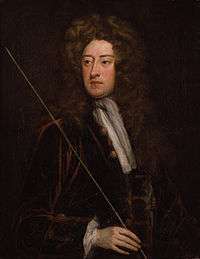

.jpg)



%2C_Attributed_to_Godfrey_Kneller.jpg)
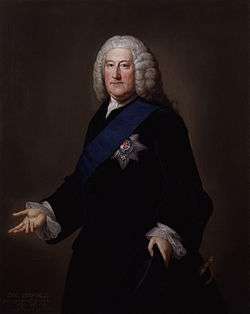

%2C_8th_Earl_of_Winchilsea%2C_3rd_Earl_of_Nottingham%2C_by_Thomas_Worlidge.jpg)



.jpg)




%2C_Marquis_Camden_by_William_Salter.jpg)




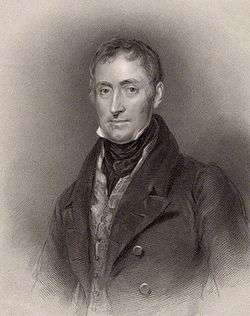
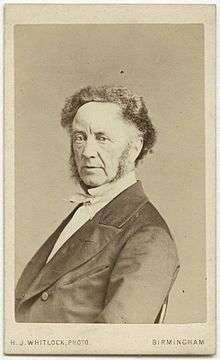





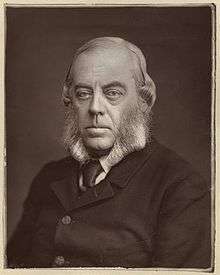





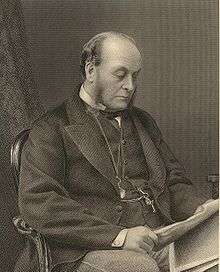


















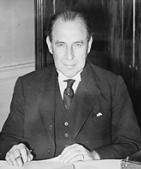





.jpg)



.jpg)










